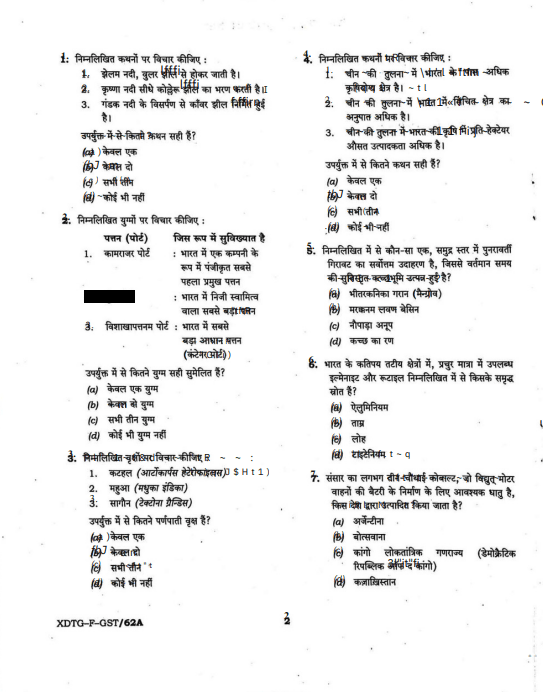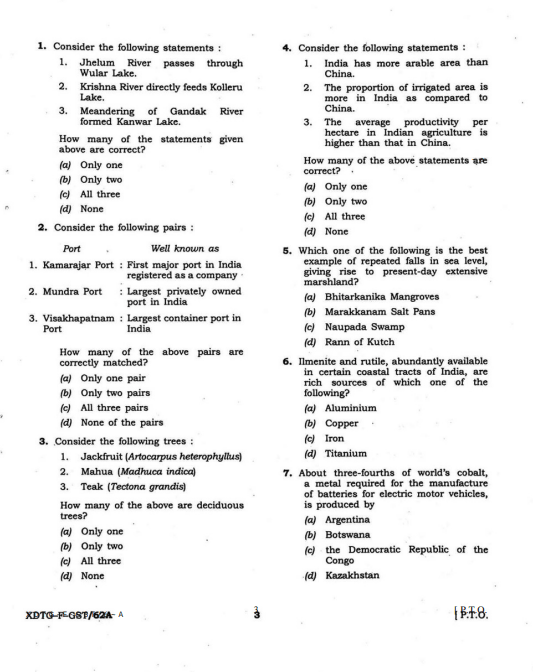Civil Papers Download
Bihar board 12th question paper 2017 (conducted by BSEB) is a vital paper for pupils getting ready for tests. It gives pupils a thorough rundown of all the subjects taught in the curriculum and assists them in comprehending the structure and nature of the test questions. This blog seeks to offer a comprehensive analysis of the Bihar board 12th question paper 2017 along with a section-by-section summary, preparation advice, access information for the prior year’s question paper, and more.
- Civil Paper : Overview
- Civil Papers : Download
- Civil Papers : Exam Pattern
- Tips for Good Preparation
- Analyzing Common Challenge
- Exam Readiness Strategies for students
- FAQ’s : Civil Paper
Civil Paper : Overview
The term “Civil Papers” holds dual connotations:
Legal Documentation in Civil Law: Within legal discourse, civil papers encompass the documentation submitted to court during civil proceedings. These documents encompass:
Complaint: A formal submission by the plaintiff, detailing the alleged harm and sought-after remedy (damages, injunction, etc.). Answer: The defendant’s responsive pleading to the complaint, which may refute the allegations or present a counter-argument. Discovery Materials: Documents exchanged between litigants during the discovery phase to procure information and evidence. Motions: Petitions filed by parties seeking judicial intervention for specific actions (e.g., case dismissal, evidence exclusion). Judgment: The court’s ultimate ruling in the case. Scholarly Articles in Civil Engineering: In the realm of civil engineering, civil papers denote scholarly works disseminated through academic journals or conference presentations. These publications delve into theoretical and applied advancements across various civil engineering sub-disciplines, including:
Structural Engineering (concerning buildings, bridges, etc.). Geotechnical Engineering (pertaining to soil mechanics and foundation design). Transportation Engineering (encompassing roads, railways, etc.). Water Resources Engineering (addressing water supply, irrigation, etc.). To discern the intended meaning, contextualize the term “Civil Papers” within its specific usage.
Civil Papers : Download



| Title | Question Paper |
|---|---|
| Civil Exam | Click Here |
Civil Papers : Exam Pattern
| Aspect | Legal Documents in Civil Law | Academic Papers in Civil Engineering |
|---|---|---|
| Types of Papers | – Complaint: Formal submission outlining alleged harm and remedy sought. – Answer: Defendant’s responsive pleading. – Discovery Documents: Exchange of information. – Motions: Petitions for judicial action. – Judgment: Final court decision. |
– Research Papers: Scholarly works in academic journals or conferences. |
| Content | Varies depending on stage of civil proceedings: allegations, responses, evidence, requests. | Focuses on theoretical and practical advancements in civil engineering sub-disciplines: structural, geotechnical, transportation, water resources. |
| Purpose | Support litigation process, establish legal claims, request judicial intervention, render final judgment. | Contribute to academic discourse, disseminate knowledge, showcase research findings and innovations. |
| Audience | Legal professionals, judges, litigants, court personnel. | Researchers, academics, engineers, students, professionals in civil engineering and related fields. |
| Format | Formal, structured, adhering to legal standards and court procedures. | Academic, following guidelines of academic journals or conference submission requirements. |
| Significance | Integral to civil litigation process, ensuring due process and resolution of legal disputes. | Facilitate knowledge exchange, promote advancements, contribute to the development of civil engineering practices and technologies. |
Tips for Good Preparation
- Learn Syllabus Carefully: Learn every topic covered in the syllabus, including the chapters, poetry, grammatical rules, and composition subjects. Make sure you are prepared for the exam.
- Frequent Practice: To enhance your abilities, practice writing assignments and reading comprehension on a frequent basis.
- Concentrate on Writing: Writing abilities should receive particular attention because they are essential to achieve high exam scores. Write stories, letters, and essays as practice to get good marks in the writing section.
- Solve Previous Year Question Papers: Examine past year’s question papers to gain insight into the format and nature of the questions. It will also assist you with time management.
Revise Often: To help you remember material and enhance your comprehension, go back and review chapters, poetry, and grammar rules on a frequent basis. - Remain Positive and Confident: Remain upbeat and assured of your skills. Have faith in your readiness and in yourself.
- Maintain Your Health: Make sure you’re eating right, getting enough sleep, and exercising on a regular basis. A sound body promotes a sound mind, which is necessary for studying for exams.
Exam Readiness Strategies for students
Exam preparation is more than just learning new material; it’s also about using practical techniques that improve your general preparedness. To guarantee that you enter the examination room confident and well-prepared, think about the following tactics:
- A Well-Being Lifestyle: Make healthy living a priority. This includes eating a balanced diet, getting regular exercise, and getting enough sleep. Physical health supports mental clarity and improves focus in general.
- Techniques for Relaxation and Mindfulness: To reduce the tension associated with exams, engage in mindfulness and relaxation practices. Practices such as deep breathing or meditation can help reduce anxiety and enhance concentration.
- Strategies for Active Learning: Take part in study groups, impart knowledge to others, summarize, and other active learning strategies. Active learning promotes a dynamic approach to studying and strengthens understanding.
- Methodical Approach to Examining: Become familiar with the format of the exam and devise a plan of attack for each type of question. Sort the questions according to priority, time, and difficulty.
- Positivity in Thought: Maintain an optimistic outlook. Have faith in your readiness and skills. Having positive ideas helps boost confidence, which is necessary for achieving the best possible results on exams.
Analyzing Common Challenges
Starting an educational path frequently means facing typical obstacles that learners face. Identifying these obstacles is the first step in creating winning plans to get over them. Here, we examine a few common issues that students encounter:
- Time management: It might be difficult to strike a balance between extracurricular activity and academic obligations. It can be difficult for students to set aside enough time for each topic or to stick to a regular study schedule.
- Procrastination: The propensity to put off work can make progress difficult. Procrastination frequently stems from a lack of drive or a sense of overwhelm, which makes it difficult to make the most of study time.
- Subject Comprehension: It might be difficult to understand complicated ideas, particularly in areas like science or mathematics. Inadequate study materials or unclear teaching strategies could be part of the problem.
- Exam Anxiety: People frequently struggle with anxiety and nervousness before exams. Stress levels can rise as a result of performance pressure, exam format confusion, or fear of failing.
- Distractions: Social interactions, technological diversions, or a disorganized study space can take attention away from concentrated study periods, which can affect focus and productivity.
- Lack of Resources: Insufficient study materials or restricted access to resources may make thorough preparation difficult. Students that encounter this obstacle could find it difficult to locate additional resources or different teaching aids.
- Motivation and Burnout: It might be difficult to maintain motivation for an extended amount of time. Burnout is a condition marked by physical and mental tiredness and can be brought on by persistently demanding academic work under pressure.
FAQ’s : Civil Paper
Q- What types of legal documents are included in civil papers?
A- Civil papers encompass various legal documents such as complaints, answers, discovery documents, motions, and judgments.
Q- Who is the intended audience for civil papers?
A- The audience for civil papers primarily includes legal professionals, judges, litigants, and court personnel involved in civil proceedings.
Q- What is the significance of academic papers in civil engineering?
A- Academic papers in civil engineering contribute to knowledge exchange, promote advancements, and facilitate the development of civil engineering practices and technologies.
Q- How do civil papers differ from academic papers in terms of format?
A- Civil papers follow a formal, structured format adhering to legal standards and court procedures, while academic papers adhere to the guidelines of academic journals or conference submission requirements .